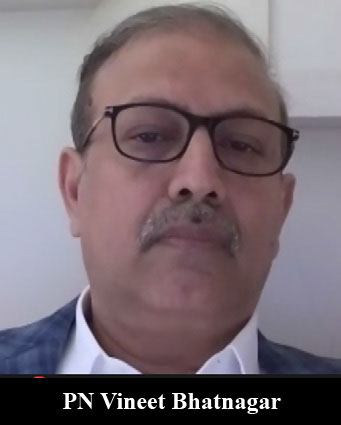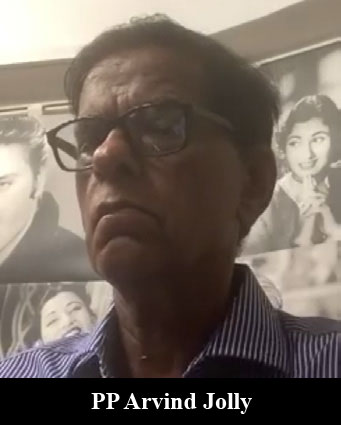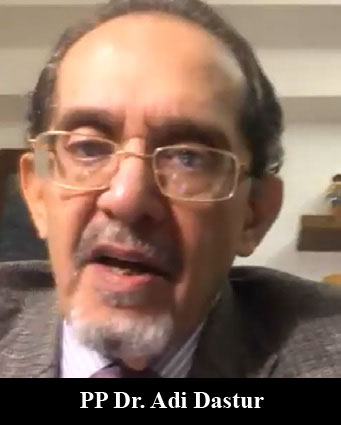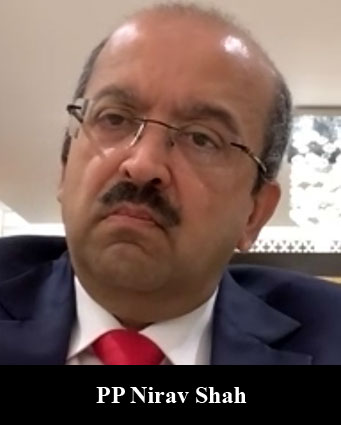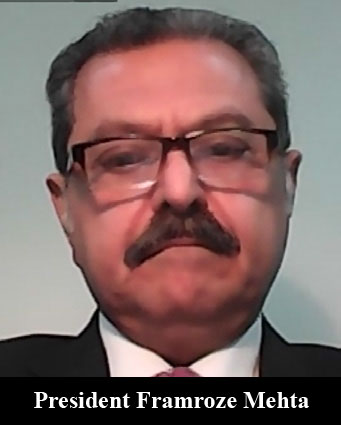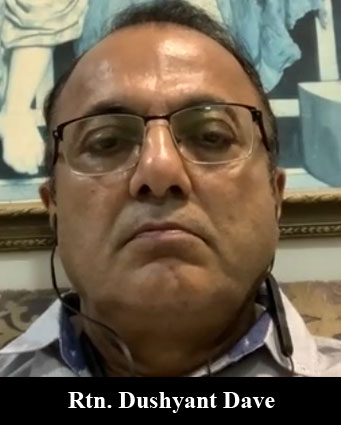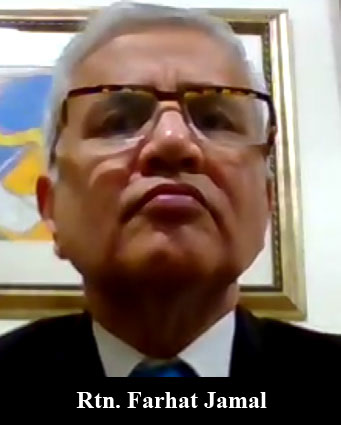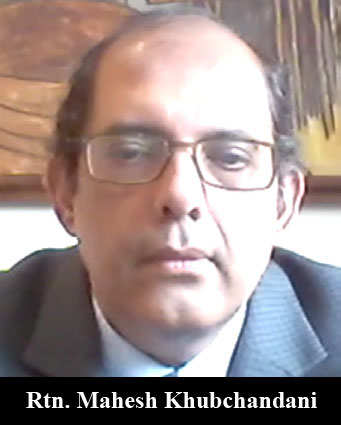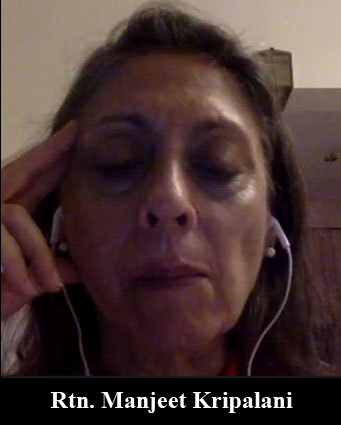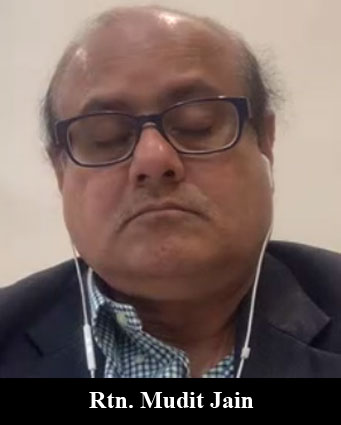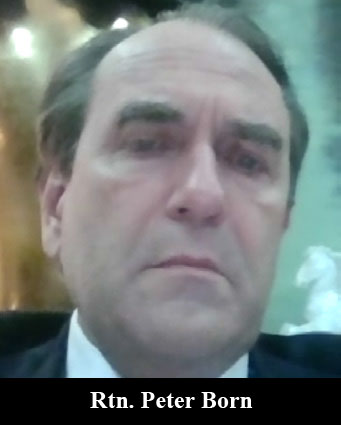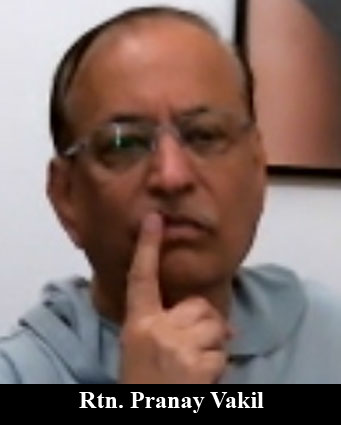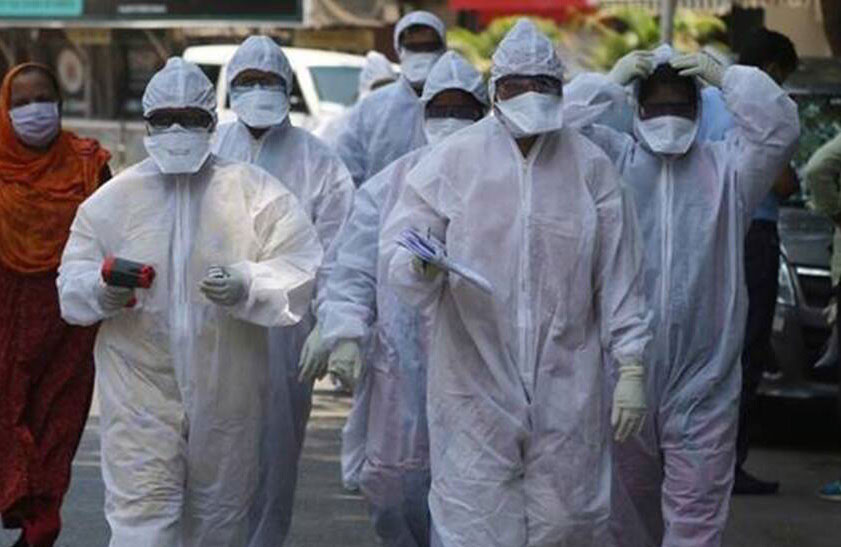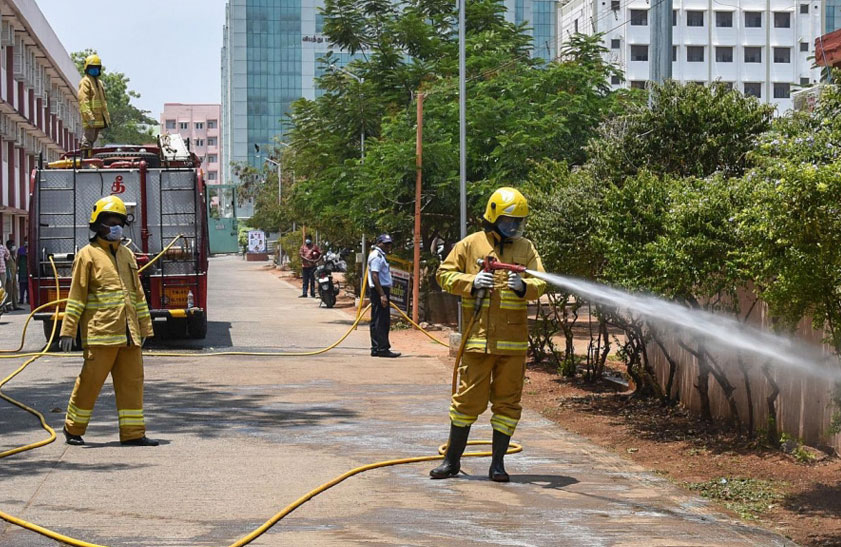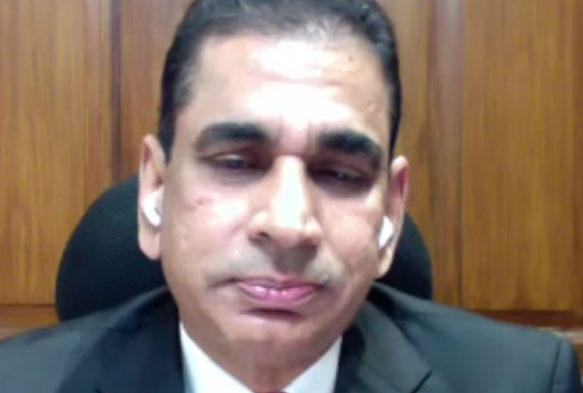
Mumbai’s Municipal Commissioner Iqbal Chahal Talks About Taking On Covid, The Invisible Enemy
Covid-19 was an invisible enemy and on May 8th, when the Government of Maharashtra appointed me Municipal Commissioner of the city, I remember I had read an e-newspaper early that morning that there had been a death on a road divider in Dharavi. A dead body had been lying there, a dead body in an auto near Dadar, and two at Prabhadevi along the road. That evening, when I took over at 7 pm, many close friends and relatives called me. They said they did not know whether or not to congratulate me because I was entering a war against an invisible enemy as the captain of the team.
That evening, I did a lot of talking to myself past mid-night. I told myself that such pandemics and calamities come once in a hundred years, and maybe god has chosen me, so, I must do my best. I made a promise to myself, to my soul and my heart that come what may, I shall try my best. That same evening, I had had a meeting with all my heads of departments at BMC, more than 120 people. I mentioned to them that just three days ago on May 5th and 6th, a team had come from Government of India and they told the PMO that many of the municipal officers were not even entering slums and containment zones. I sympathise with them because the situation at that time was alarming and it was scary going into containment zones. The GOI team said that the officials in the health department only worked at the exit gates of the containment zones, filled up forms and came back because this was the feedback they had got. This information haunted us. I said, no Zoom meetings, I called all 120 of them in my meeting hall, all ward officers, joint commissioners, additional commissioners etc because I needed to have eye-to-eye contact with my team and I needed to have some commitment from them and wanted to give some from my side as well.
I told them that whatever that has been reported by the GOI Covid team, these things shall not be repeated. I told them that the only mantra applicable for all of us will be perform or perish. I told them that this applies to the MC also. I said, even if this is a war against pandemic and an invisible enemy – and there were hundreds of deaths in Dharavi by this time – it doesn’t matter but we can’t just sit and watch.
The next morning, I spent an hour in the ICU of Nair Hospital’s Covid ward in a PPE kit. I spoke to each doctor, staff and patient who could speak and shared my number with all of them. I visited each of the 45 beds in the ICU for 50 minutes and I told everyone on my team that I need to be informed first if they face any problem. After that, I went straight into Mukundnagar in the Dharavi containment zone. We did a 5.5 km march with team BMC. That first visit and walk was educational: we checked toilets for hygiene, we went into various houses and food packets were distributed because we had distributed lakhs of food packets under lockdown and, by the end of May, we were distributing 900,000 food packets daily.
I must thank Puneet Chhatwal sir from Taj hotel who launched and helped us in that period of time. All the food for doctors and staff was going from his hotel. So, in this visit, I learned a lot of things, I found all the medical shops are shut, we had to address a lot of sanitation issues and then we started to put our plan in action. After this, a BMC team led by me went to 55 slums and containment zones in Chembur, Govandi, Malad, and all over. Within a few days, the fear was off from 100,000 people that nothing was going to happen by going into containment zones and that proved to be a game-changer. Within a week, 50,000 BMC employees had entered the slums of Mumbai where more than 10 million people lived. The journey began there; we did have a confirmed drug protocol in the months of May and June. We did not have a map, or plasma and vaccine but, unlike the West where they kept on waiting for the vaccine, we went on to a different model. We said we would go into the slums, do massive surveillance, do door-to-door testing, and we were the first city in the world who went with the theory of ‘chase the virus’. This was done within 48 hours of my joining on May 10th when we put this strategy in place.
As I said, 50,000 BMC employees were in the containment zones doing door-to-door testing, checking their temperature and oxygen levels. If even one person was found Covid positive, 15 people from the family and immediate neighbourhood would be lifted physically, under force – even if there is a need for police, they would be put in buses and put in government quarantine. We requisitioned 182 hotels within a few days, 42,000 beds and moved almost 30,000 high-risk people from the containment zones onto these beds. We observed them for 10 days, if there were any symptoms they would be shifted to the hospital and if not, then they would be brought back home post sanitization of their houses. We moved 140,000 people and broke the virus’s contact with more than half a million people by chasing it away. Our brothers and sisters from the slums were so happy because we had quarantined them in 3 star and 4 star hotels. Many prestigious hotels were occupied by slum dwellers in quarantine. This proved a game-changer, it broke the chain for virus spread and when we found that this was working, the word spread and then we did not have to use force, people were happy to move out. So, this formula worked in Dharavi and between May 1st and June 15th, Dharavi had more than 200 deaths but by end of June, the WHO openly proclaimed the success of our model. This was followed by recognition from the World Bank, BBC, Los Angeles Times, Washington Post, The Economist, RBI, GOI – they all congratulated team BMC for the Dharavi model.
We also did two important things, we created a community leader in each of these containment zones, they were given cell phones and my number was given to them, if the ward didn’t respond they could get in touch with me. At the same time, war rooms were introduced, we put teachers and doctors, telephone operators, medical teams to manage them and they were to report a couple of times in a day in the war room whether the quality of food packets was okay or not. We started sanitizing public toilets every two hours as against the 24 hours, as they were the main source of spread of virus. We started distributing PPE kits to doctors, private doctors, we would give them a quota in advance, and we distributed lakhs of such PPE kits. We were keeping surveillance and updating with the help of war rooms, about thousands of health workers started visiting the slums, the mechanism was such that if they didn’t, they would be caught off-guard. After that we undertook a massive operation to sanitize the slums and, because of that, we had zero malaria deaths this year which is another monsoon-related disease that claims 85 per cent casualties.
This has been a long and great fight but we realised early on that it is not just a day or two-day thing, it is a long affair, it may go on for years. We knew that there are four pillars of the fight against COVID-19: a perfect testing discipline, abundant ambulances free of cost, huge increase in hospitals beds and doctors, and availability of doctors. And, for these four pillars, we had only five weapons with us: texting, tracking, tracing, quarantine and treatment. I told my team to put each of them on priority. It wasn’t easy but we did it. Mumbai was the only city in the world where we stopped sharing a positive test report with the patient, we coined another policy of chasing patients. If 20,000 were tested in a day and 2000 were positive, please don’t send them a harsh report as it may cause panic. We decided that these can be sent in a form list and in parallel we created ward rooms and we created a dashboard from IIT Mumbai and started online booking in 148 hospitals in Mumbai.
We called up these people from doctors and by 12 noon we would visit their homes and allot them beds in hospitals. After this, phone calls and messages of people not getting beds stopped. We decentralized the fight against COVID-19 to a 24-ward war room and every ward became independent, fighting and totally sufficient with doctors, ambulances, and hospital beds. I salute the 35 major private hospitals where, on my single appeal, they agreed to treat the patients at government rates. It was unheard that a slum dweller could be treated at Breach Candy Hospital on Rs 4000 a day and this is going on today also. It is the right time to work for humanity and we must show the spirit of Mumbai and how we fight united, to the entire world. Not only this, they surrendered 100 per cent of the ICU to COVID-19 patients and there were cases when the richest of the rich and the poorest of the poor were in the same ICU on the same floor with the same medical care and doctors but different charges. So, it was a unique example.
We also made the testing regimen disciplined. My father is a military officer, and that discipline shadows me. I said every report had to come within 24 hours. Earlier, the test was done on a certain day and the reports would take 20-22 days. By that time, the person would have already passed away. So, I was happy that I could make that unique change. There was a perfect discipline. People went to Supreme Court against me that this was breach of the patient’s right to get reports directly but we told the court that we were taking it upon ourselves to save the patient right from the start to the end and we were taking care for them. This immediately stopped all the running around of the patient from pillar to post. So, ultimately, we surpassed legal hurdles and even today we are on duty to do our work.
Then, we had a lot of problems of ambulances, we went from 80 to 825 in 10 days. We told the transport department to requisition vehicles; we took 800 Innovas and Sumos, we took them to the workshop, put a small aluminium sheet between the driver’s compartment and the vehicle and we put a weekly quota of PPE kits. We also took BEST buses from the workshop, the Uber platform also helped for the ambulances and because of this, ambulances were easy to access. Then the availability of beds, we went from 4000 to 22,000, from May 1st to May end, we had 48,000 CCC quarantine beds and we had 24,000 CCC2 beds for asymptomatic poor people. We created almost 94,000 beds. So, from June onwards we didn’t give the opportunity to anyone to criticize that beds were not available. The last pillar, doctors, I requested our hands-on Hon’ble CM Uddhav Thackeray who made a Facebook appeal to retired doctors and paramedical from Army, Navy and Air Force, and government to join us and we said we will pay a handsome honorarium, Rs 80000 for the MBBS, Rs 200,000 per month for special doctors and even more for more specialist doctors. We got 3000 people in a few days and we offered them choice posting. I knew Maharashtra has 50+ medical colleges with more than 200 interns. I made a WhatsApp appeal to these 10,000 boys and girls to join us with a stipend of Rs 50,000 per month, free boarding and lodging, and said that we would give them non-Covid work of managing ward rooms and managing the asymptomatic patients and making arrangements for them. In a few days, 900 young boys and girls from tribal and backward areas had reported to us. These young girls and boys handled and allocated beds, shared reports with the patients about their tests, sympathised with them.
The 5 weapons we had: texting, tracking, tracing, quarantine and lastly treatment were maintained and by putting these activities on autopilot, we could avoid the second peak in the first wave. After such a bad situation in May and June, in June Mumbai lost 3200 people and if you see today, the deaths have come to 200. The death rate has come down. I would also here salute the NGOs and hotels of Mumbai who supplied 900,000 food packets to hospitals in the lockdown. All this happened because the citizens of Mumbai have been very disciplined and nice to us. On the day of Diwali, we didn’t impose a fireworks ban on private premises unlike Delhi and other states. I only made an appeal to the citizens to not do so, but on the day of Diwali, one of the editors of newspaper sent me a message saying that last evening, Mumbai with a population of 60 million, had pin-drop silence unlike other cities. This is one example where we see how disciplined Mumbai people are.
Last but not the least our Honourable CM came up with a slogan of ‘My family, my responsibility’. This has been a game-changer; we have come to just two cases per ward today which is great improvement. We decided, between September and November, to visit houses in Mumbai and deployed health workers who checked oxygen levels and temperatures and gave them the dos and donts, helpline numbers and made an appeal to not go in public without masks. This campaign is a great success. People are moving here and there with masks on the chins, on the head, but nobody dares to move on the streets without the mask. We are still struggling, we have fined 1.2 million people in last 90 days for not wearing masks, we have collected almost Rs 24 crore, now this habit is important to follow to restrict the spread of virus. In Dharavi, in the last 64 days, there are zero deaths, 16 active cases and I am glad to announce that. Our rate on infection is 0.12 per cent today, at one time it was 40 per cent. This is also one of the results of the ‘My family, my responsibility’ campaign. The positive tests are decreasing to about two to three per cent and according to WHO two per cent is zero pandemic, so, we are closer to the lower percentage. These figures speak about the system we have created with the help of doctors, hospitals, BMC team, citizens and everyone chipping in and contributing to the fight against COVID-19. This is the reason I started proclaiming that Mumbai is the safest metropolitan in entire world.
Just three days ago, UK had 36,000 positive cases, US had 4600 deaths in a single day and so on. So, in comparison to the other cities of the world, Mumbai is far better.
For this, everybody has chipped in and our CM and the Government of Maharashtra had tremendous faith in team BMC, led by me. Hon’ble CM sir made a statement to me when I joined which I will never forget in my lifetime. He said, ‘Chahal, we are putting you there, I don’t know what is going to happen because things are going out of control but if you succeed, the success will be yours and if you fail, failure will be mine!’ I have never heard a politician talk like this. That really ignited the fire in my belly. I thought, come what may, we must succeed, and I think we did!
A couple of our members who want to go or return from abroad – is there going to be any change in the institutional quarantine protocols or is it going to continue? What is your plan on travel for people who have got vaccines and COVID-19 passports?
Immediately after Diwali, Delhi started reporting 8000 daily cases and Mumbai had 800. In the months of February and March 2020, 1.7 lakh people landed at Mumbai airport and that is how Mumbai became a hot bed for Covid. So, we got so scared, and we acted. I told the CM that this should not happen again. Earlier, we were late to shut down the airport which led to the spread of COVID-19. So, we started the exercise to test arrivals at the airport itself. On December 21st, there was an announcement for shutting down of airlines from UK amid a new strain of virus and that immediately led to take an action and we quarantined 202 passengers of the first flight. We were harsh, but it was necessary, five of them had the new strain. Now, next time, when the news started coming, we made the quarantine compulsory. We are thinking of withdrawing the rule for domestic airlines but as far as Europe is concerned, most countries are in lockdown. If the situation becomes comfortable, these rules will be eased.
How did you and your family cope with you all being on the frontlines?
I joined on May 8th and on May 9th, I told my wife to go to my hometown and I said I’ll always be in a lot of stress that I should not pass Covid to you as I’ll be moving day and night. So, they were cooperative and decided to move to our native place. I was alone in Mumbai till the end of December and they joined me recently. So, I was assured that I would not pass on the virus.
Senior citizens and persons with health issues are worried, in terms of work and socialising. What is your advice to them?
Two assurances: TIFR have told me that the slums of Mumbai have not attained 80%+ herd immunity because we are very densely populated city. Even in non-slum also, we ordered a zero survey this morning, the reports will come very soon. Secondly, our vaccination drive is going to start in full swing. The GOI has divided the vaccination in three phases, with a single window of outsourcing. Only GOI can buy the vaccines. Phase one and two will cover 30 crore people which will be done by March 15th and the first phase will end on February 15th in which 1.8 lakh health workers will be vaccinated. Phase 2 started on February 2nd, covers all frontline workers, ward boys, scavenging staff etc, and the third phase covers everybody above 50 years of age. There is a list of 3 million people with all data. We are planning to take private hospitals on board for this.
When do you think you will use private hospitals to make the vaccination process faster?
The GOI being the sole window for procurement of vaccines, right now, the instructions are clear to not involve private hospitals all over the world. At my own level, when you need to vaccinate 130 crore people of the country, it going to be impossible without the help and support of private hospitals. So, without waiting for GOI, we have created a database of private hospitals which can be on board at a minute’s notice, 16 of them already stand selected at our level, subject to clearance by the GOI one day and maybe, by the end of February, we may add up to these 16.

